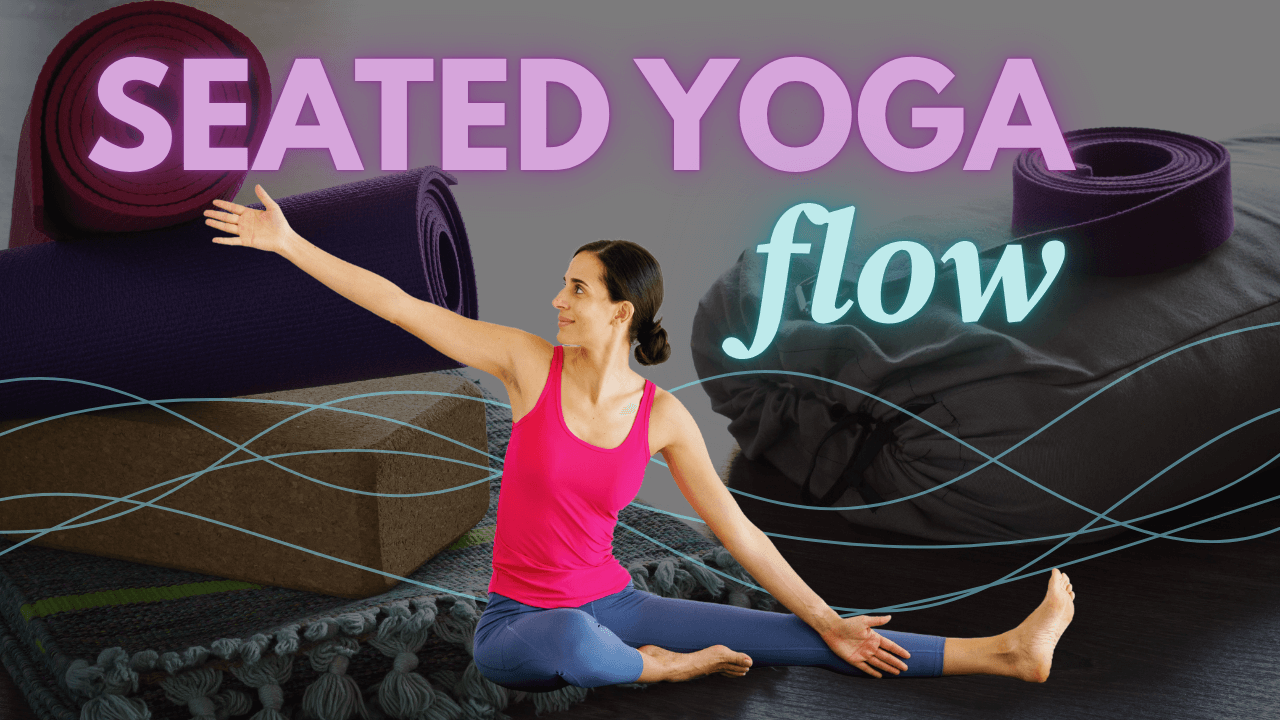Your Students Need Sequences They Can Actually Use
Your students don’t need another fancy flow filled with Instagram-worthy poses. They need sequences they can use in real life—sequences that work when they’re traveling, when they’re tired, when they don’t have much space, or when getting up and down from the floor feels like too much work.
This head-to-knee flow does exactly that. It’s a seated sequence focusing on hips, spine, and shoulders that works on a mat, in bed, or on the floor of a hotel room. Your students can practice it before they even start their day, and you can teach it with confidence knowing it’s accessible for most bodies.
In the video below, I’ll guide you through the full sequence. Try it yourself first—because you need to experience every sequence before you consider teaching it. Then bring it to your students and watch them thank you for giving them something practical they can actually use.
Watch the Full Head-to-Knee Flow Sequence
What Makes This Sequence Work
Accessible for Real Bodies
This sequence stays entirely seated. There’s no getting up and down from the floor, no weight-bearing on wrists, and no need for fancy props. Students work with head-to-knee pose and its variations—poses most bodies can access with simple modifications.
Your students can choose whether to keep their spine long or allow it to round. They can rest a palm on their leg instead of reaching for their foot. They decide what feels right for their back, their hamstrings, their energy level on any given day.
Hits Multiple Movement Patterns
Even though this is a seated sequence, it covers significant ground. Students move through forward folding, lateral flexion, rotation, and even a side plank variation if they choose to take it. They stretch hips, spine, and the side body. They build strength in their core and shoulders.
This is exactly what exercise physiology tells us bodies need—movement variety, not pose complexity.
Easy to Remember and Teach
The sequence follows a clear structure: four shapes on the right side, then four shapes on the left side. Students move through head-to-knee forward fold, revolved head-to-knee, a pulsing side stretch that can become side plank, and a seated twist.
You can teach this from memory after running through it twice. Your cueing can focus on helping students find their own best expression rather than memorizing complicated choreography.
How to Use This Sequence in Your Classes
As a Complete Short Practice
This sequence works beautifully as a 10-minute practice on its own. Perfect for online classes, lunch-break sessions, or students who want something they can do before bed.
As Part of a Longer Class
Use this as your mat work section in a 60-minute class. It pairs well with standing poses that warm up the legs and hips, and flows naturally into a finishing sequence.
For Students with Limited Mobility
This sequence offers depth without requiring students to move through multiple positions. It’s ideal for students managing joint pain, balance challenges, or energy limitations.
Try It, Then Teach It
Twenty years of teaching has taught me this: the sequences that look simple often offer the most depth. Your students will remember how you made them feel, not how many fancy poses you packed into class.
This head-to-knee flow gives you a practical, accessible sequence you can teach with confidence. Your students get movement patterns their bodies need without unnecessary complexity.
Try the sequence yourself using the video above. Notice what you feel in your hips, spine, and side body. Pay attention to which variations work best for you. Then bring it to your students and let me know in the comments how it goes.
Get More Sequences Like This
If you want ongoing support with fresh, practical sequences you can use immediately, check out The Yoga Class Prep Station. Every month you get new follow-along videos, lesson plans, and teaching resources designed for real students in real classes.
You can also sign up for my newsletter to get the full lesson plan for this sequence plus more teaching resources delivered to your inbox.
Planning your yoga class shouldn’t take longer than actually teaching. Let me help you plan confident, creative classes without the overwhelm.


